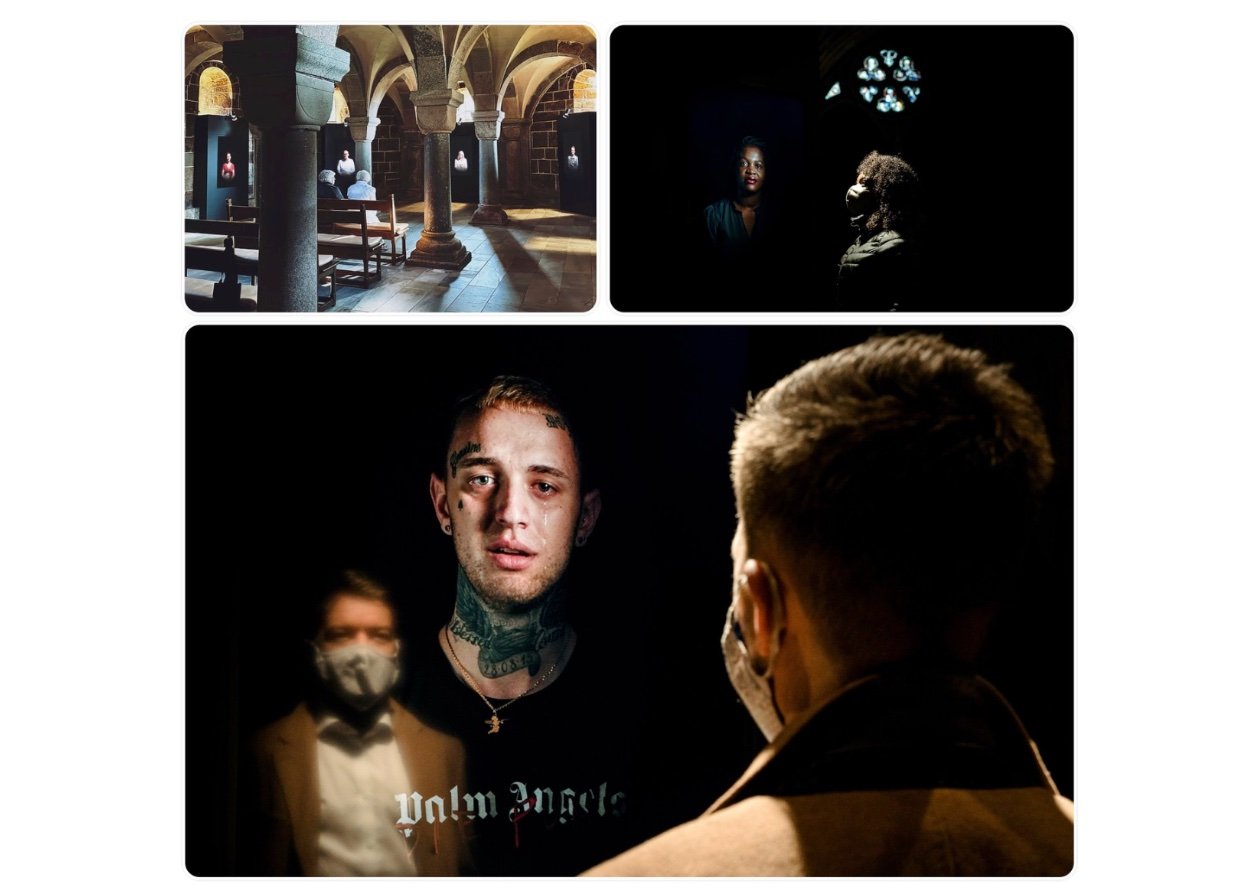Render unto the machine the things that are the machine's and unto humans the things that are human
Since its premiere in York Minster in 2020, over three hundred people have contributed their portrait to the experimental work, People We Love. I want to thank every one of them. I find in all of their faces a silent affirmation of much that is best about our species, about the love that binds us, the stories that connect us, the light we create for ourselves, partly in acknowledgement and partly in defiance, of the pain and suffering that accompanies us all. I recognise the honesty and vulnerability that each of them has invested in the project and am truly grateful. Thank you.
What follows is an extract I wrote for the catalogue that accompanied the edition in Viborg, Denmark in the Autumn of 2023.
“Stop thinking about artworks as objects, and start thinking about them as triggers for experiences. That solves a lot of problems: we don’t have to argue whether photographs are art, or whether performances are art, or whether Carl Andre’s bricks or Andrew Serranos’s piss or Little Richard’s ’Long Tall Sally’ are art, because we say, ’Art is something that happens, a process, not a quality, and all sorts of things can make it happen.’... What makes a work of art ’good’ for you is not something that is already ’inside’ it, but something that happens inside you — so the value of the work lies in the degree to which it can help you have the kind of experience that you call art”.
Brian Eno
In 2019, the Chinese phone manufacturer Huawei sponsored a ground-breaking concert featuring an orchestra performing Schubert’s unfinished 8th Symphony, which an artificially intelligent ’composer’ had completed. This artificial intelligence (A.I.) had been trained on Schubert’s entire oeuvre, enabling it to compose a convincing finale to the Symphony. Although the audience’s response was overwhelmingly positive, the critical reaction to the concert was considerably more reserved. Much of the resulting analysis appeared to surround the anxiety that machines might be capable of evoking profound emotional responses in humans.
The reasons behind this anxiety are clear. Art is surely the most profound reflection of human identity and culture. The market prices of established artists’ work point towards our species’ search for meaning. However, with machines now capable of creating music, stories, and films on demand, what are the implications for artists, audiences, and humanity as a whole? If, in a decade, we have little machine ’artists’ in our pockets, creating unique works for each of us, on demand, what does that mean for human artists, and what does it say about us, their audience?
People We Love at ArtHouse Jersey & Pittsburgh, USA.
As of now, we can only guess what the impact of A.I. will be on our cultural lives. But if, as Brian Eno suggests, ’what makes a work of art ’art’ for you is not something that is already ’inside’ it, but something that happens ‘inside you’, much of this anxiety can be ameliorated. Perhaps the healthiest response to the challenges ahead is investing in our skills as audiences, encouraging things to happen inside us, and becoming our own curators for the experiences we call art.
People We Love is a work built on this premise. Over the last three years, over three hundred ’ordinary’ citizens of England, the USA, Jersey, and Denmark (though all both ’ordinary’ and ’extraordinary,’ as we all are) sat to be filmed looking at a picture of someone they love. You, the viewer, stand in place of the object of their love and meet their gaze. If you expect the work to ’happen to you’, you will be disappointed, but if you allow some time to truly look and for your imagination to wander, I’m confident that beautiful things will happen inside you.
People We Love in York Minster, Selby Abbey and Viborg Cathedral, Denmark.
When these things do ’happen’, a story is created, it becomes a meditative dialogue on the embodied, spiritual, beautiful, mystifying - and ultimately, deadly - mess of being human. I know, now that the work is on its sixth edition, having been shown in the U.K., Europe and the USA, that People We Love has the power to affect profoundly. What fascinates me is the absence of the artist in this creative conversation. Instead, it is made by an anonymous sitter and an anonymous viewer, in dialogue, both as trigger and receptacle, communicating over space and time about the universalities and the specifics of the human experience.
People We Love asks us to consider taking our time and valuing these slow, meandering, imaginative journeys. Render unto the machine the things that are the machine’s and unto humans the things that are human. It’s all too easy to allow ourselves to become passive consumers of algorithmically delivered work. Instead, perhaps we can meet the challenge of A.I. with a radical cry to ’up our game’ and reaffirm our role as imaginative co-creators of artistic experiences. We all, as audiences, have an opportunity to pause our incessant scrolling in order to protect and deepen our profoundly human - and culturally undervalued - inner experience.
Kit Monkman, August 2023.

